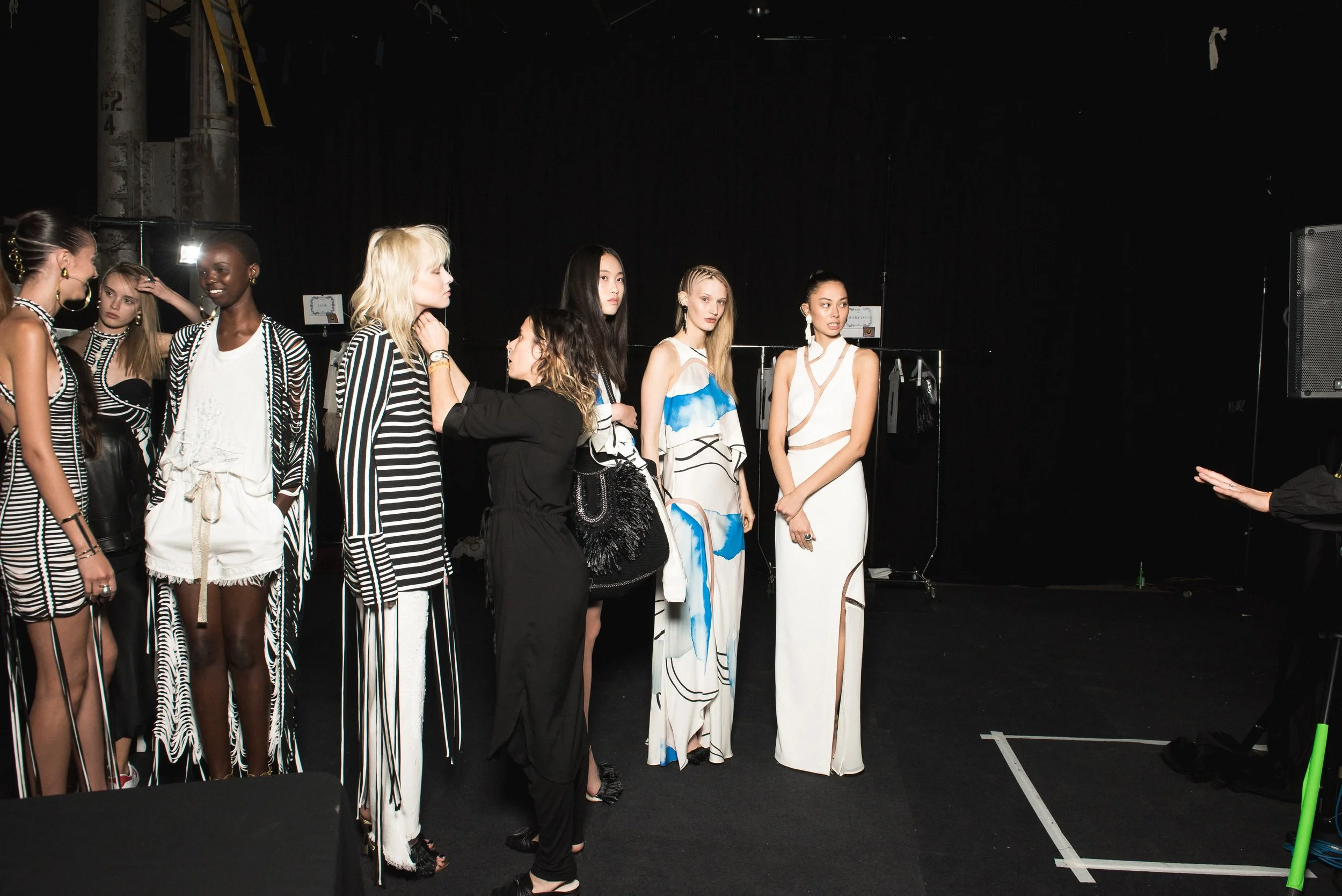Can fashion weeks be sustainable?
Photo: Flaunter (the photos are not from Copenhagen Fashion Week or Stockholm Fashion Week)
In the aftermath of Copenhagen Fashion Week (1 to 4 February) and Stockholm Fashion Week (7 to 9 February) we ask ourselves if fashion weeks can be a part of sustainable future?
Climate and environmental impact
Regardless of what kind of event it always comes with its climate and environmental impacts. When measuring an events carbon footprint you will look at indirect and direct emissions. The direct ones are related to what the organisers themselves are doing, it can be the shipping of products for the scene and other logistics. The indirect will be the transportation of all the guests and materials related to the participants. Energy consumption for electricity use is another area which goes into the carbon footprint calculations. If food is served is is an indirect emission. Except energy and transportation, material usage must be considered from an environmental perspective. Is whatever we are building reusable or recyclable? It is for example better from an environmental perspective to rent tables, sound systems and so on then to buy new. Even building a scene must consider if second hand or leftover materials can be used instead of new.
As you probable have figured out a huge fashion week comes with a climate and environmental footprint. But this can of course be addressed and better options can be made but one of the largest difficulties comes to the transportation of guests, since fashion weeks (before the pandemic) often had guests coming from all over the world.
What Stockholm Fashion Week has shown us is that is does not have to be the case, it can be digital and anyone can participate. Digital events has a much lower carbon and environmental footprint than physical, even if digitalisation per see doesn’t always equalise that something is more sustainable.
In what ways these areas are considered as a whole during Stockholm Fashion Week remains unknown, but a promising event this year was the collaboration with Popswap. To bring a circular alternative to renew your closet to fashion week is one step in the right direction.
Copenhagen Fashion Week has a sustainability report which you can read. According to the report some of the targets are to offset emissions, measure carbon emission from a sampling of shows, identify venues with green standars, ban single use plastics, etc. The report also include social sustainability goals.
Goals, targets and to develop standards for future work are all promising efforts and in the end what matter is, is that less materials is used and cycled while carbon emissions goes down to zero. Climate compensation is an act of economic responsibility but it is not a sustainable event if emissions are not being reduced in total numbers. But why did Copenhagen Fashion Week get criticised by sustainable fashion influencers?
Photo: Flaunter
Purpose of a fashion week
We are not going to get into the details of either Copenhagen Fashion Week or Stockholm Fashion Week, but what we can say is that the dilemma between the fashion workers and the environmentalists comes back to what message you put out there. An event can be sustainable from a material perspective but if its content encourage consumers to consume, it becomes tricky. If new trends are the major focus, the fast fashion chains are quick to copy and produce more cheap clothes. When Fashion Weeks become all about the new and people feel they need to stay updated to the trends, we have lost the essence of sustainability.
You might ask what a fashion week should be about if not trends can be shows? The whole point is to show new collections right? Well not necessarily. In the end fashion designers are artists and they create to be creative. What is created can become a trend but it can also focus on the aspect of creating and be innovative. Collections can be different from each other and be inspired by what is already out there. Trend often goes in cycles and cycles are good from a circular fashion perspective. We can always find something from the 60s, 70s, 80s and 90s second handed.
Fashion weeks could be an arena of how to be more creative with the clothes you have, focus on collections made of materials already there, put the artist on the scene instead of the business and so on.
Our suggestions for the fashion weeks
Keep it digital for oversea travels
Recycled materials and zero waste
Reused, recycled and up cycled collections, encourage second hand first hand
Artists before capital
Stop collaborations with fast fashion brands
Make it inclusive both in terms of guests and artists
Measure the whole carbon footprint and reduce it with at least 20% in total per year
Meaningful conversations about clothes roles in our lives and sustainability efforts
Educational side events including green materials, ethical factory stories, fair trade and so on
If all fashion weeks started here, they might have a place in a sustainable future.
Photo: Michael Lee



